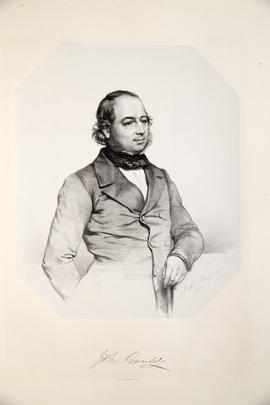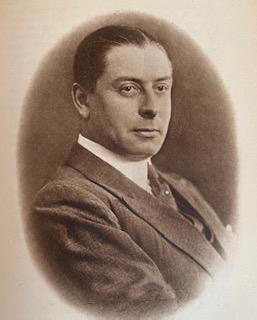Harold Maxwell-Lefroy was an English entomologist. He served as a Professor of Entomology at Imperial College London and as the second Imperial Entomologist to India. He left India after the death of two of his children from insect-borne diseases. He worked on applied entomology and initiated experiments on the use of chemicals to control insects. A formula he developed was utilised to save Westminster Hall from destruction by wood-boring beetles, while others were used to control lice in the trenches during the First World War. The success of his chemicals led to increased demand and the founding of Rentokil, a company for insecticide production. Maxwell-Lefroy's students included Evelyn Cheesman who took up a position at the insect house in London Zoo from 1919. He was killed while experimenting on fumigants to control insects.
Curator of Reptiles at the Zoological Society of London. He was awarded the Silver Medal on 16th November 1955 for outstanding services in leading expeditions to collect animals from Sierra Leone in 1948, Sierra Leone and Gold Coast in 1950, Uganda in 1952, Sierra Leone in 1954 and British Guiana in 1955
Curator Veterinarian at Whipsnade
John Gould was an English ornithologist. He published a number of monographs on birds, illustrate by plates produced by his wife, Elizabeth Gould, and several other artists including Edward Lear, Henry Constantine Richter, Joseph Wolf and William Matthew Hart. His identification of the birds now nicknamed 'Darwin's finches' played a role in the inception of Darwin's theory of evolution by natural selection. Gould's work is referenced in Charles Darwin's book On the Origin of Species
Museum Curator of the War Utility Exhibition
Louis Fraser was a British zoologist and collector. Fraser had worked as an assistant in the Indian Museum at Calcutta around 1888. He worked for fourteen years at the museum of the Zoological Society of London. He worked with the anatomist Richard Owen on studies of the emu and rhea. He participated in the Niger expedition of 1841 as the African Civilisation Society's scientist. Upon his return he became in charge of Lord Derby's collection at Knowsley Hall. In 1846 he was sent by Lord Derby to collect in north Africa. In 1848 he became conservator at Knowsley Hall. He wrote Zoologica Typica, or figures of the new and rare animals and birds in the collection of the Zoological Society of London, published in 1849. In 1850, Fraser was appointed Consul of Quidah, Dahomey (now Benin), West Africa. Around 1857-1859 he collected birds and mammals in Ecuador for Philip Lutley Sclater of the Zoological Society of London, and the year after in California. Upon his return to London, he opened a shop in Regent's Park, London, selling exotic birds. The last years of his life he spent in America. Fraser wrote a Catalogue of the Knowsley Collections (1850) and described several new species including the Derbyan parakeet Psittacula derbiana named after his employer.[2] A number of species and subspecies have been named in his honour, including Fraser's anole (Anolis fraseri ), Fraser's ground snake (Liophis epinephelus fraseri ), a centipede snake (Tantilla fraseri ),[5] Fraser's eagle-owl (Bubo poensis), Fraser's warbler (Myiothlypis fraseri ),[6] and Fraser's musk shrew (Crocidura poensis)
Evelyn Cheesman was a British entomologist and traveller. Between 1924 and 1952, Cheesman went on 8 solo expeditions in the South Pacific, and collected over 70,000 specimens, which she accompanied with sketches and notes. These are now part of the collections of the Natural History Museum.
Cheesman was one of five children of Florence Maud Tassell and Robert Cheesman, born 8 October 1882. Interested in the natural world, Cheesman was unable to train for a career as a veterinary surgeon because the Royal Veterinary College did not accept women students in 1906.
After World War I, she met Harold Maxwell-Lefroy, professor of entomology at Imperial College of Science and honorary curator of the insect house at Zoological Society of London, and studied entomology. In May 1917, Evelyn took up the position of Assistant Curator of Insects at London Zoo. In 1919 she became a fellow of the Royal Entomological Society of London. In 1920 she was the first woman employed as a curator at London Zoo.
In 1924 she was invited to join the St George zoological expedition to the Marquesas and Galapagos Islands as entomologist, alongside Anglo-Irish explorer and entomologist Cynthia Longfield. Cheesman considered the expedition to be disorganised, and left it at Tahiti. She was able to continue exploring and gathering specimens on her own with the help of £100 from her brother Bob. From then on, Cheesman preferred to travel alone.
In 1926, she resigned as Insect Curator and affiliated herself, unpaid, with the natural history department of the British Museum (now the Natural History Museum). She spent most of the next twelve years on expeditions, travelling to New Guinea, the New Hebrides and other islands in the Pacific Ocean. In New Guinea she made a collecting expedition to the coastal area between Aitape and Jayapura and visited the nearby Cyclop Mountains. She was known in the islands as 'the woman who walks' and 'the lady of the mountains'.
During the Second World War she returned to England and did war work, but injured her back. After the war, in 1949-50, she travelled to the Pacific islands again, but due to ongoing pain, decided to give up active exploration. She assisted at the Natural History Museum for many years as an unpaid volunteer. In 1954, after hip replacement surgery, at the age of seventy-three, she felt well enough to again go on an expedition to Aneityum in the South Pacific. She had a house, named 'Red Crest', built for herself about five kilometres inland from Alelgauhat village. During her nine-month stay she collected 10,000 insects and 500 plants.
She was made an Officer of the Order of the British Empire (OBE) in the 1955 New Year Honours, and was granted a civil list pension in the same year for her contributions to entomology. She continued to work at the museum, writing and classifying specimens, until her death in London on 15 April 1969.
Bushby was Acting Curator of the Insect House (1923), then Curator (1925)
Curator of Mammals at London Zoo. He was Director of Chester Zoo 1978-1995. He won the 1999 Silver Medal of the Zoological Society of London.
Born in 1888, the son of herpetologist George Albert Boulenger. He was curator of reptiles at London Zoo from 1911-1924, and then director of the aquarium from 1924 to 1943.


